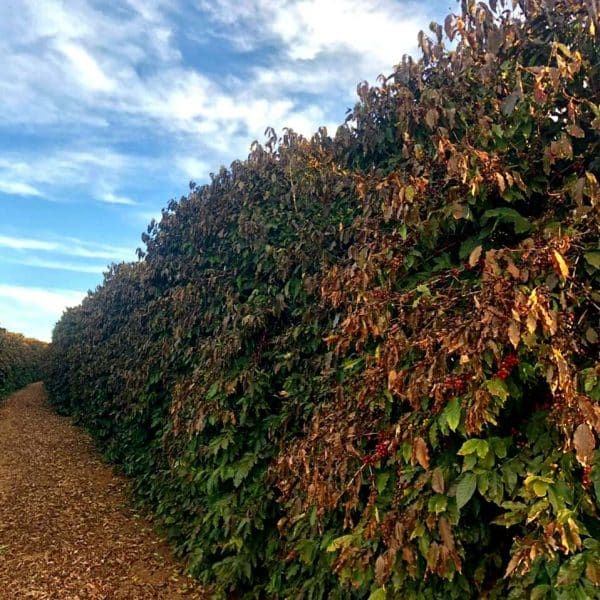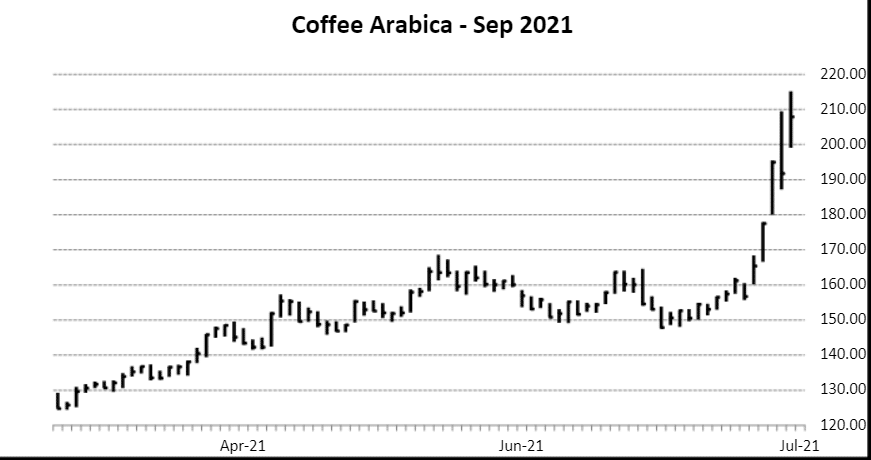
Frost in Brazil – A new challenge tackling the coffee world.
Area: A huge zone but heterogeneously affected
As many of you have already seen in photos, Brazil has been hit by a wave of frost in 3 coffee regions in the past week: Paraná, São Paulo and Minas Gerais.
This is the worst frost in Brazil since 1994 and the impact on production has not yet been fully evaluated.
To give you an idea, if we take the size of the two main states, São Paulo and Minas Gerais, their combined area is equivalent to twice the size of Belgium, Switzerland and Germany together. Nevertheless, it is important to mention that even if these states combined result on a huge area, many coffee zones were not affected (Zona da Mata), or were slightly affected (Cerrado).
The damage occurred in several ways
On new plants there can be a loss of 100%. We consider new plants, trees up to 2 years old (so never really been in production). In that case, they will have to be replaced. On more established trees, they will have to be pruned. This means that they will not produce at the next harvest. So, if the frost can affect the quality of the current crop, the real impact will be on the volume of future crops.
“The first visible indication of damage, one that has been widely observed, is burned leaves and their subsequent fall. In the next 15 to 20 days, it may be possible to observe whether plants have died or been severely damaged,” Daily Coffee News.reported.
Numbers: Too early for a relevant estimate
Since the area is so vast, we understand how difficult it is to quantify the damage and to have covered all coffee areas and thousands of coffee farms spread across these three states. Current estimates of damage range from 2 million to 7 million bags. At this stage, however, it is impossible to quantify the effect of a frost event. As mentioned earlier, the effect of the frost was not the same throughout the region and the development of the next crop also depends on several other factors, such as rain or a possible other frost period in the coming weeks.
Some figures to keep in mind :
Crop 2021/2022 (harvest now) was already predicted with a lower volume compared to the previous harvest. This is because the crop has a two-year planting cycle, with low production one year followed by possible record yields the next.
2020/21 : Total = 70 million bags (50 Arabica + 20 Robusta)
2021/22 : Total = 56 million bags (35 Arabica + 21 Robusta)
An initial forecast for crop 2022/23, would be at least the same as 2020/21, with the increment of new planted areas (systematically increasing year after year), therefore generating higher figures.
Coffee Market : An immediate reaction
Since last week, the c-market is increasing drastically to historical levels.

Impact for our partners : So far so good but still some concerns
Fazenda Dutra in Minas Gerais has not suffered from the frost. However, their main concern now is the lack of rain, which could affect the harvest. The same situation applies to Fazenda Daterra, which expects excellent quality this year despite many challenges (bad rains, hailstorms, covid).
Both say that the 2021 harvest will be significantly smaller compared to historical data, but that the quality will be great!
Weather: New frost predicted
Coffee producers from 541 cities were warned of the possibility of new frost during the early hours of July 30 and 31. The main coffee regions of Minas Gerais were included in this warning, even Cerrado and Zona da Mata.
Will climate change change the production areas in Brazil as in 1975 when the cold practically wiped out coffee in the state of Paraná, at the time one of the largest coffee producers in the country?